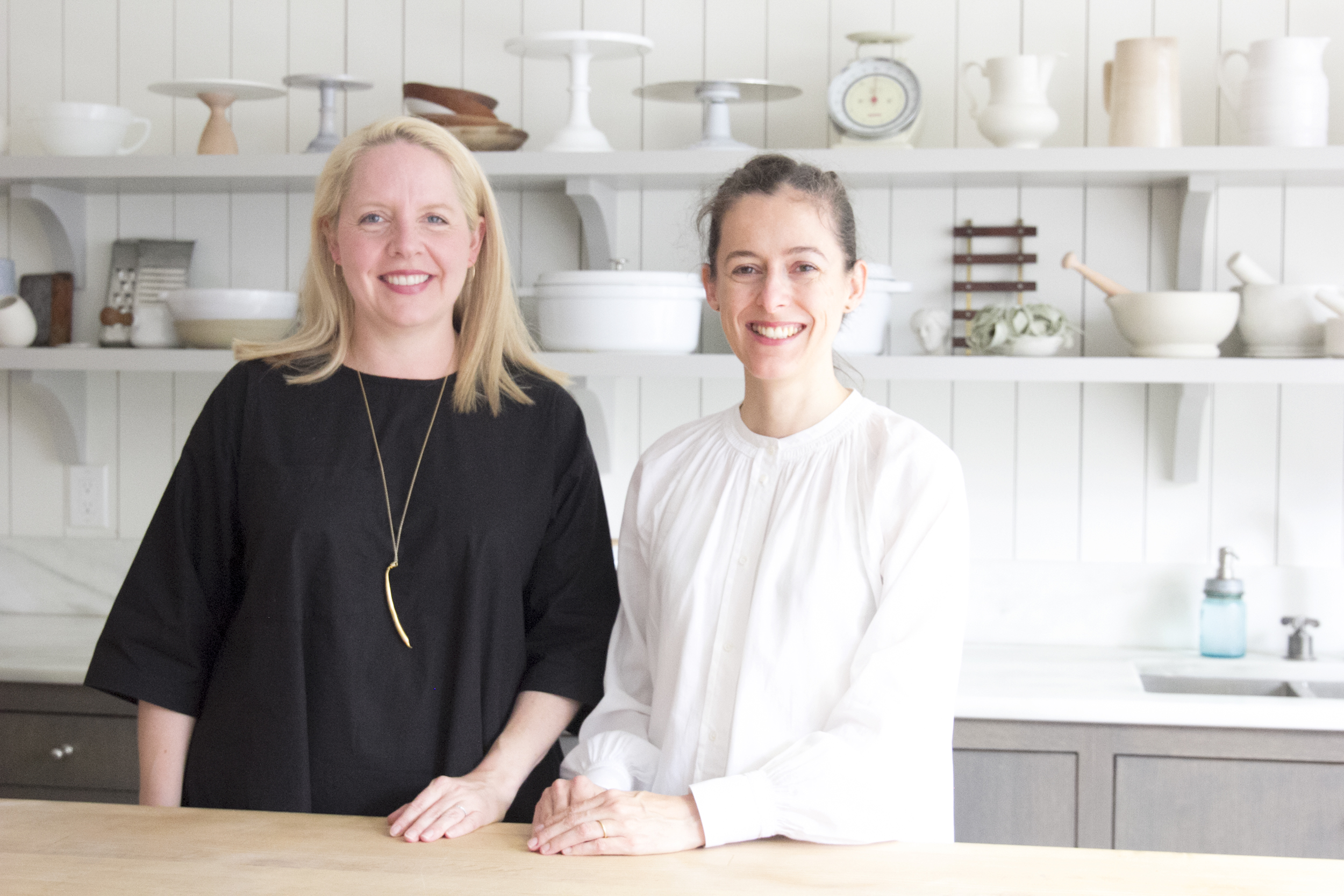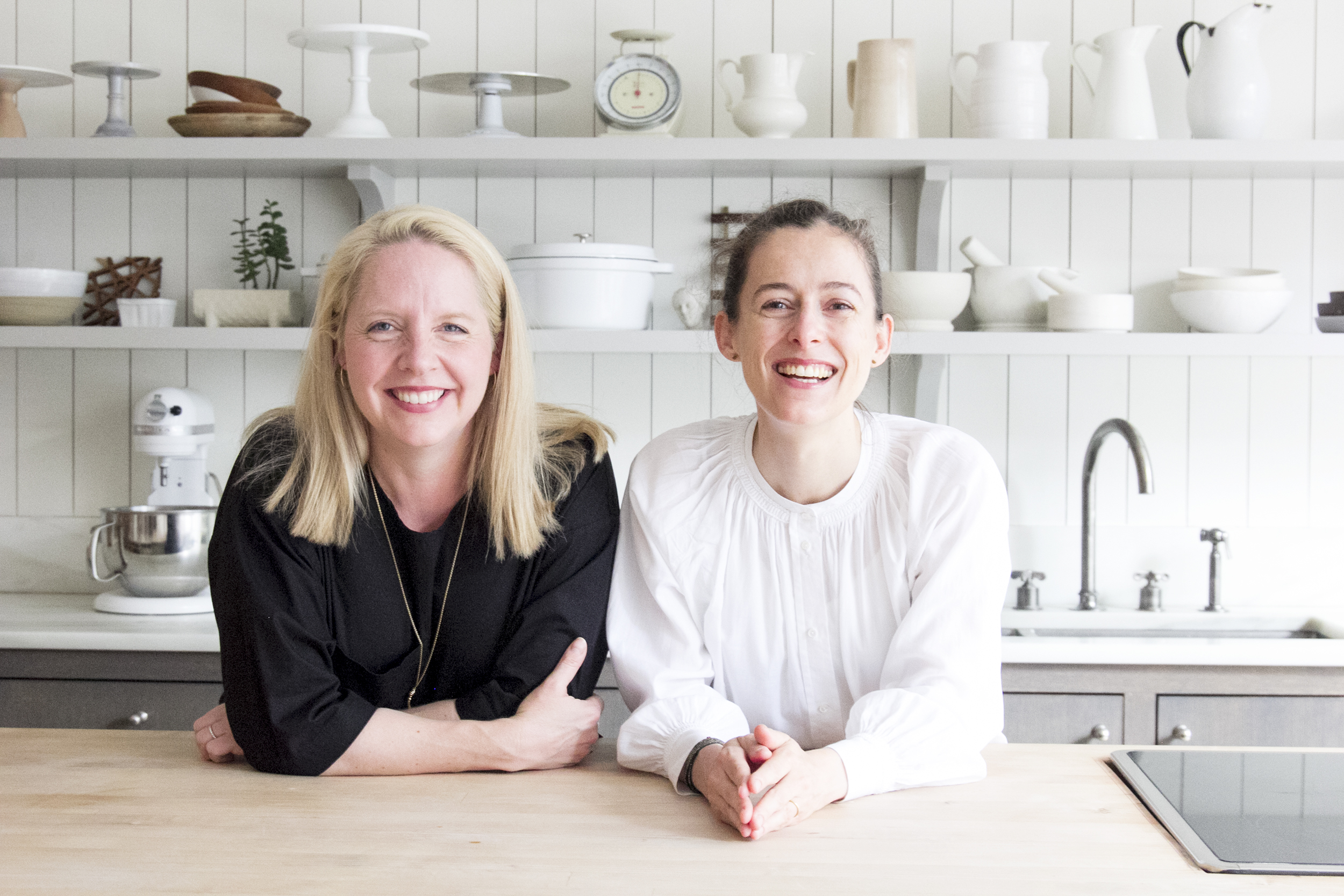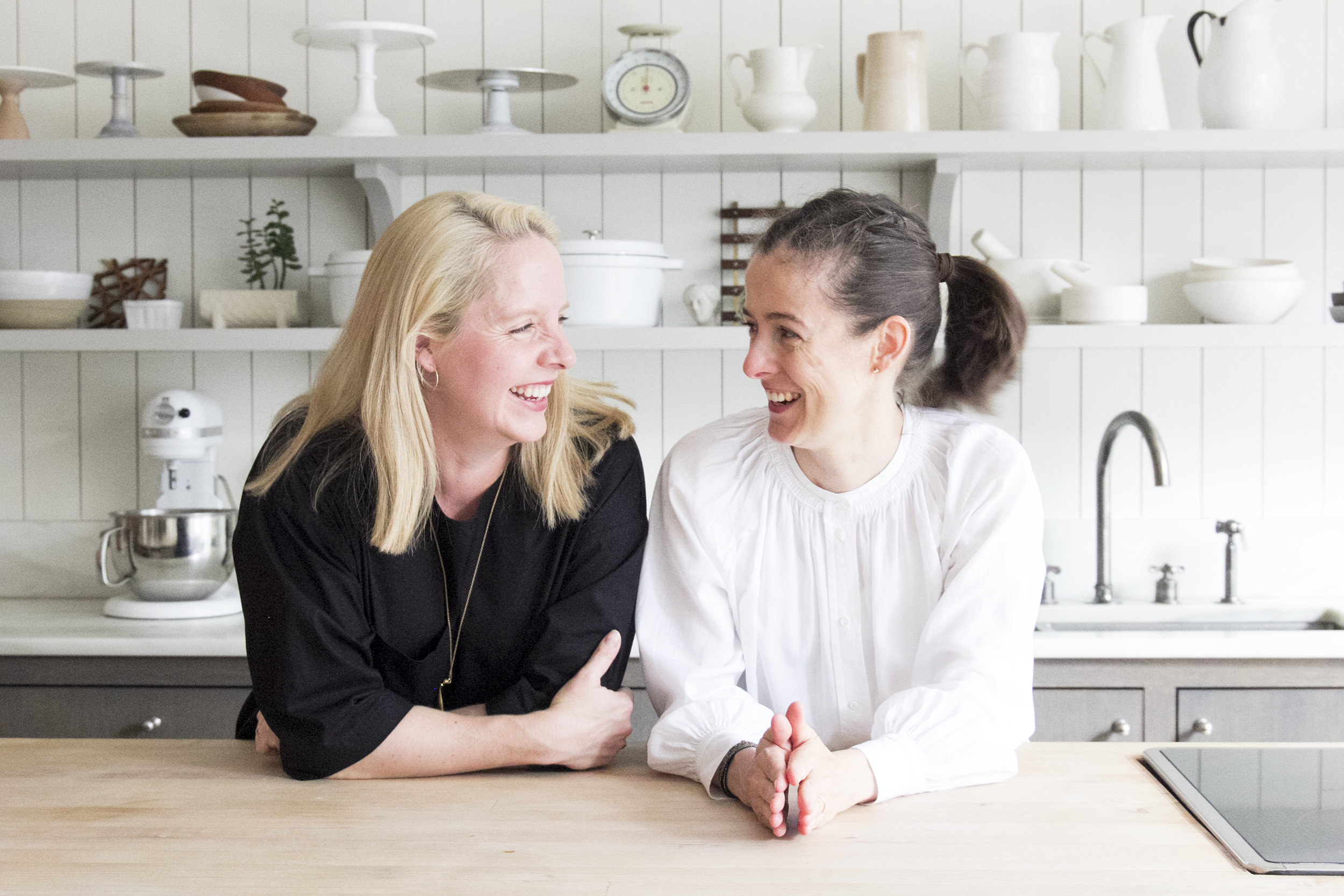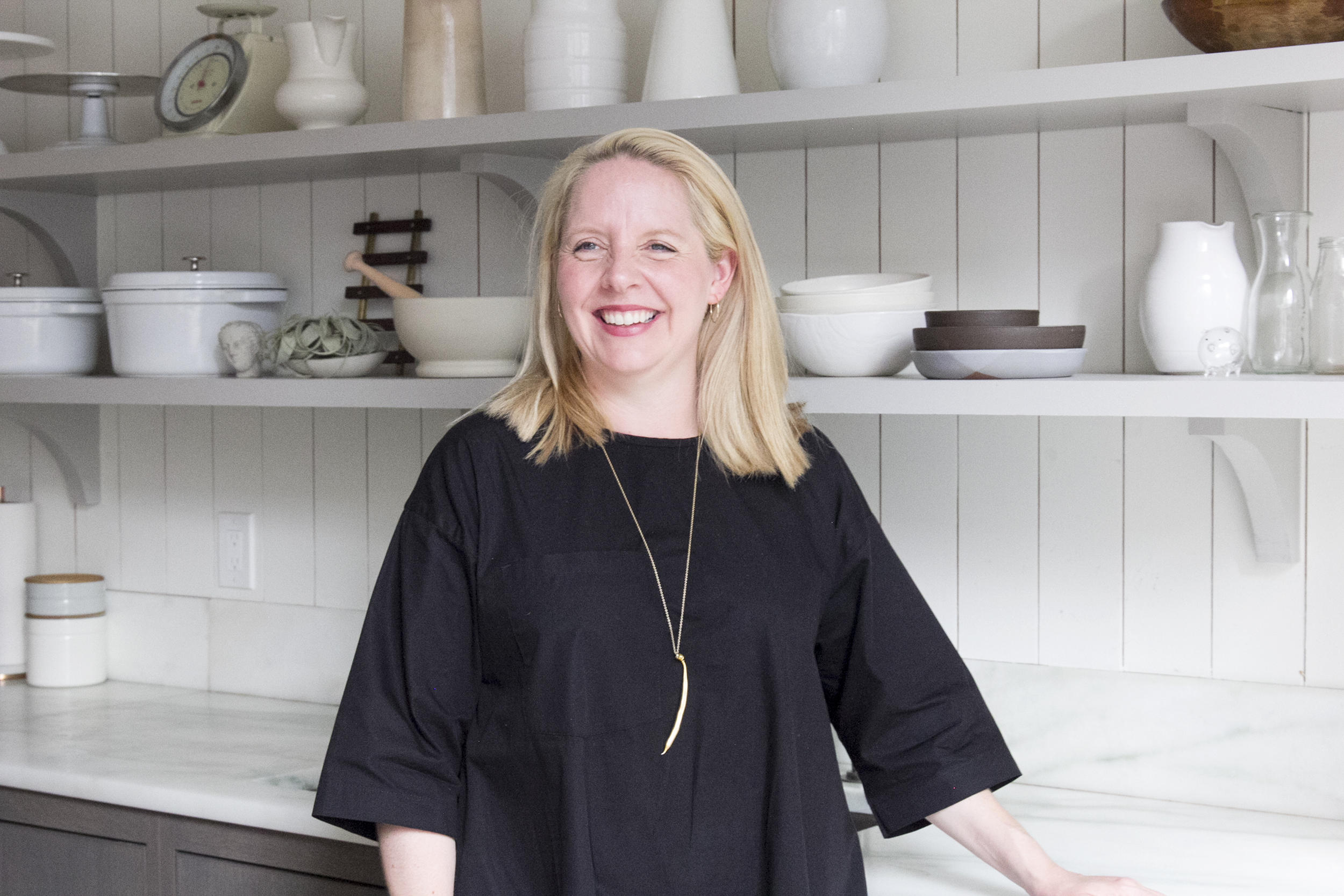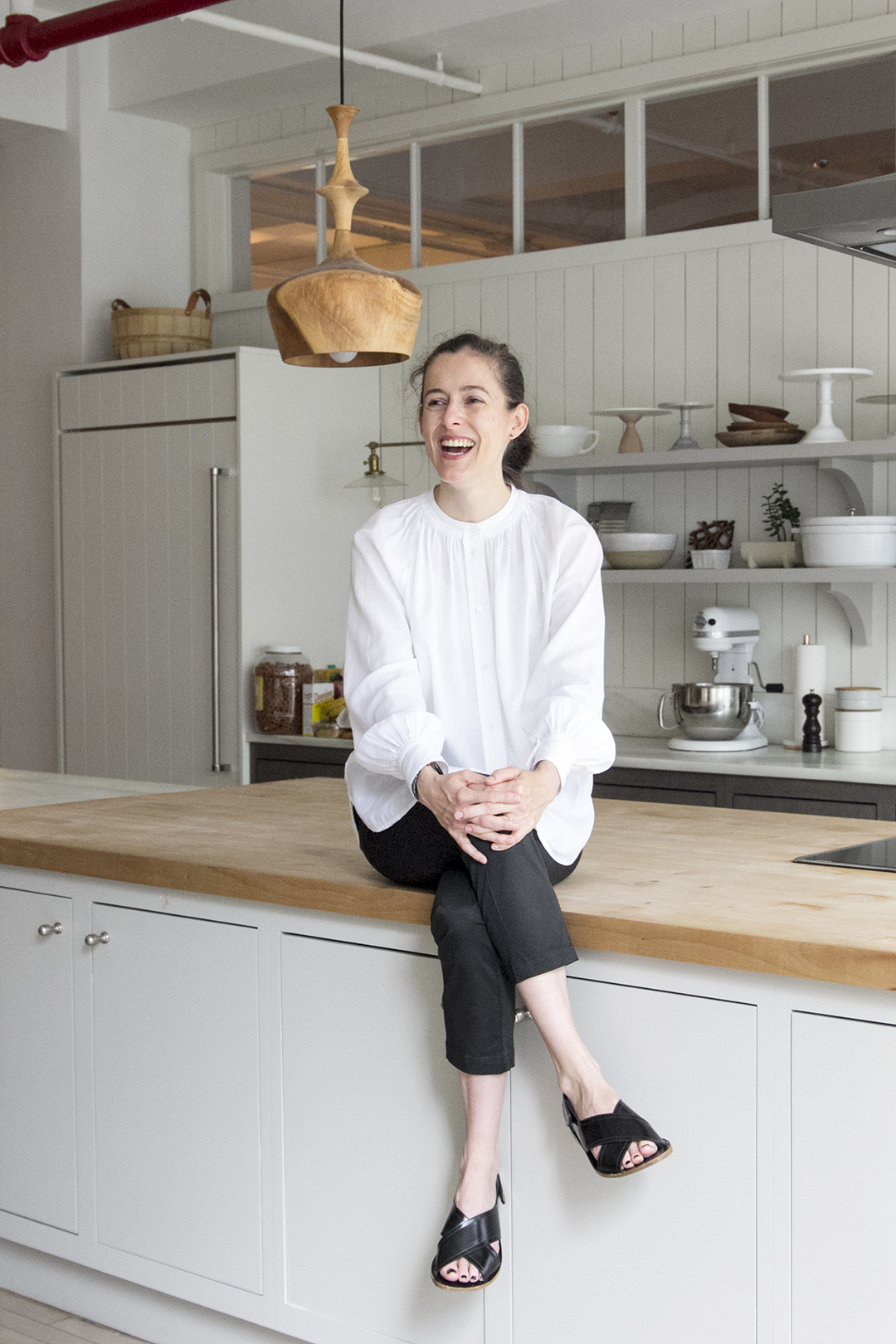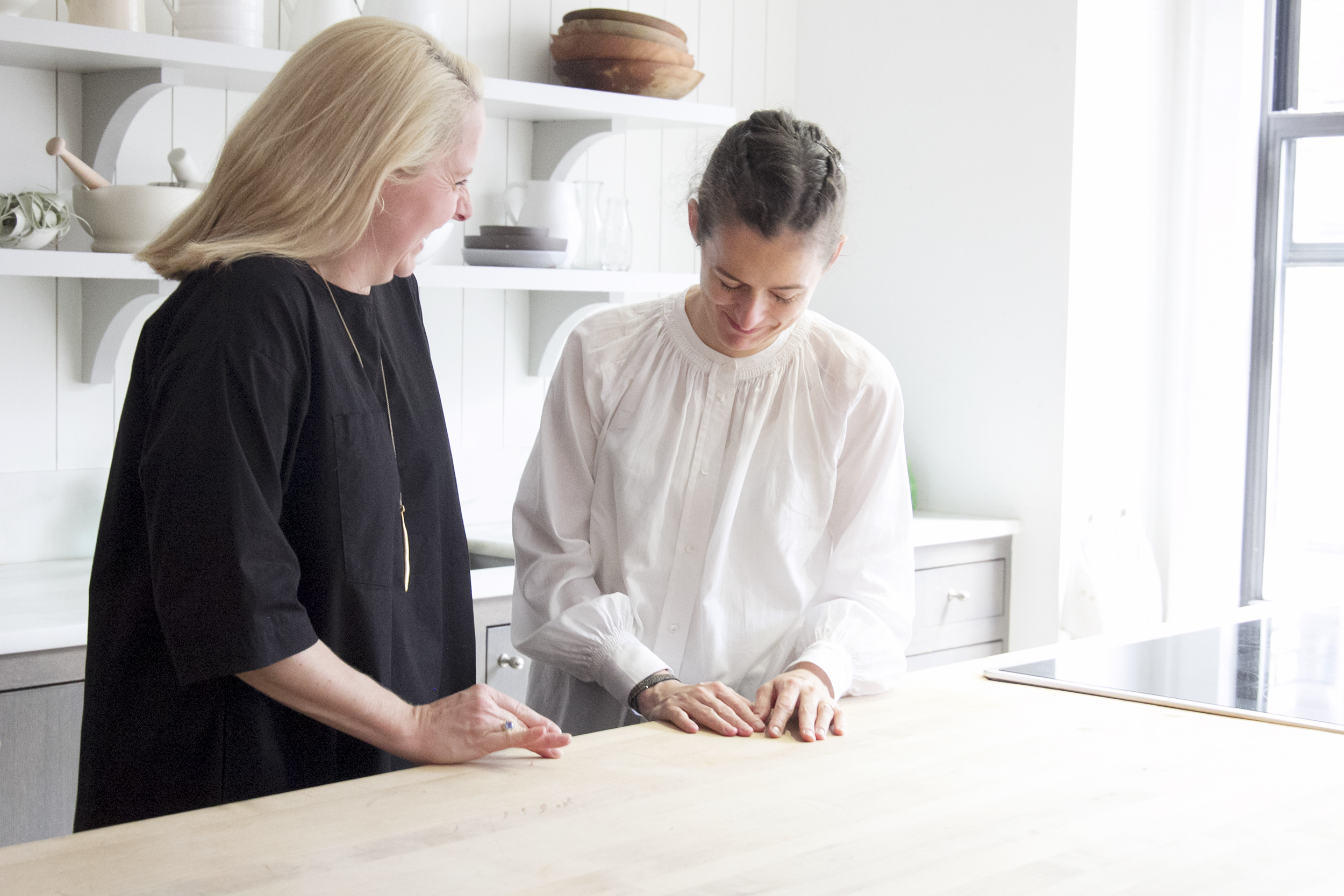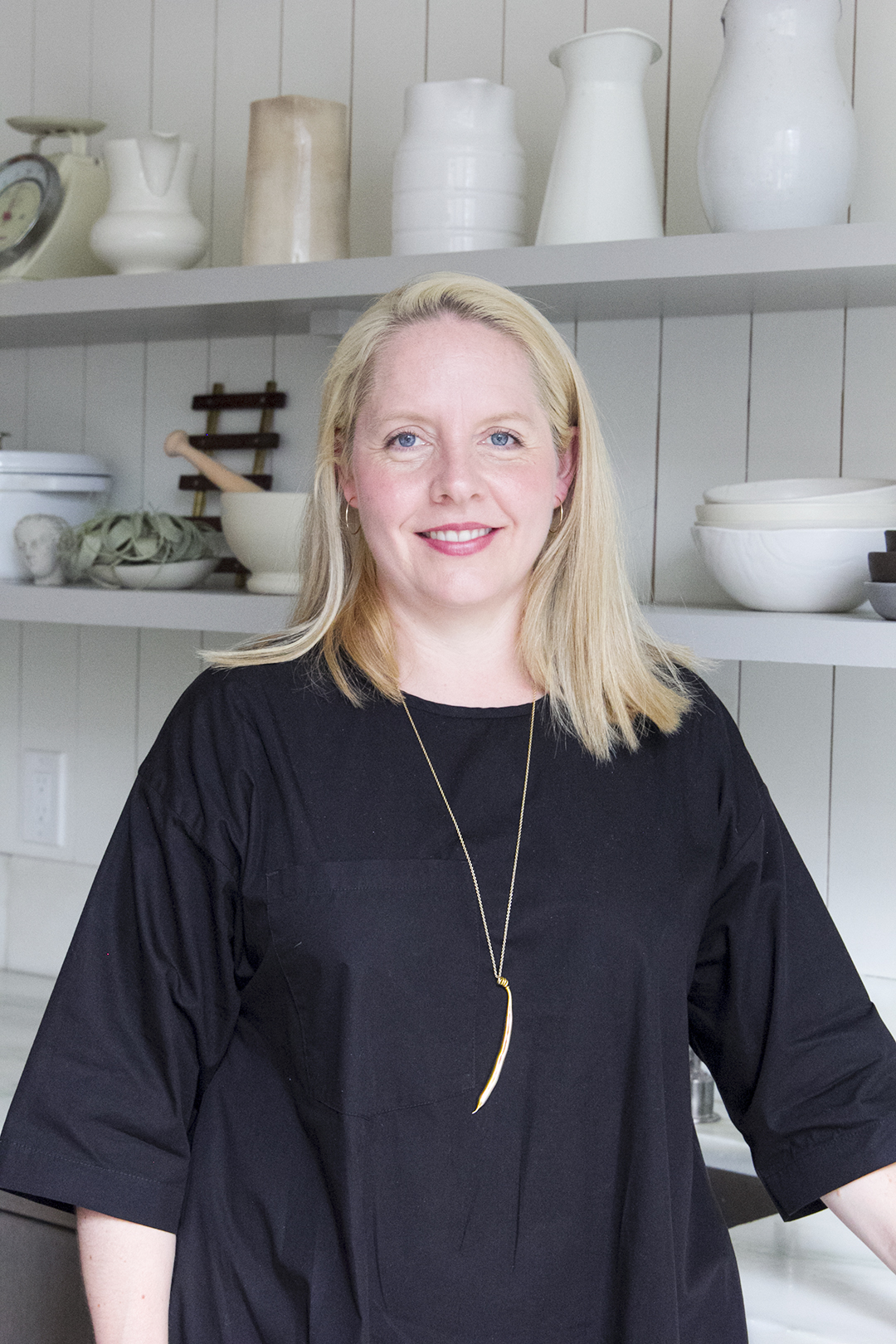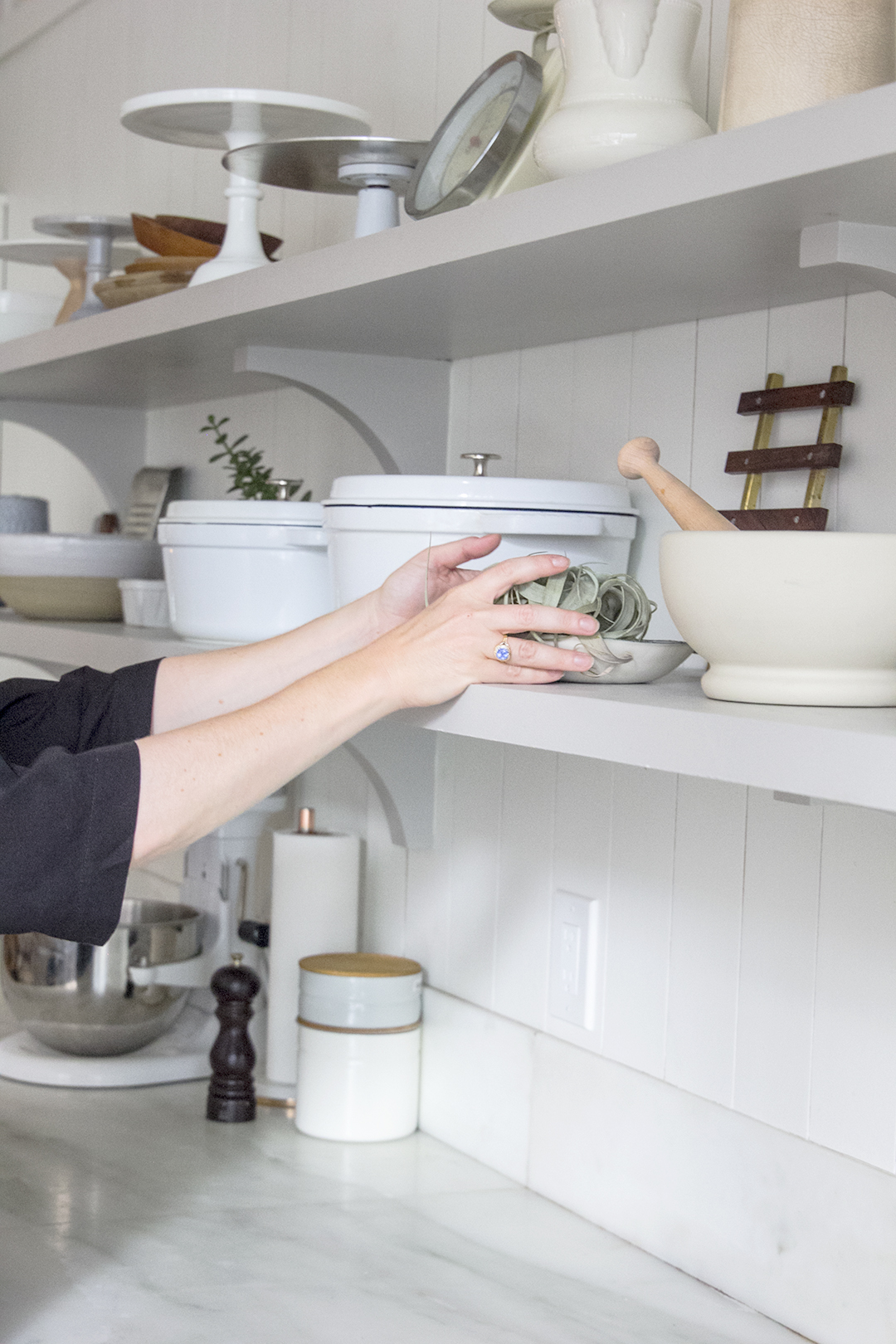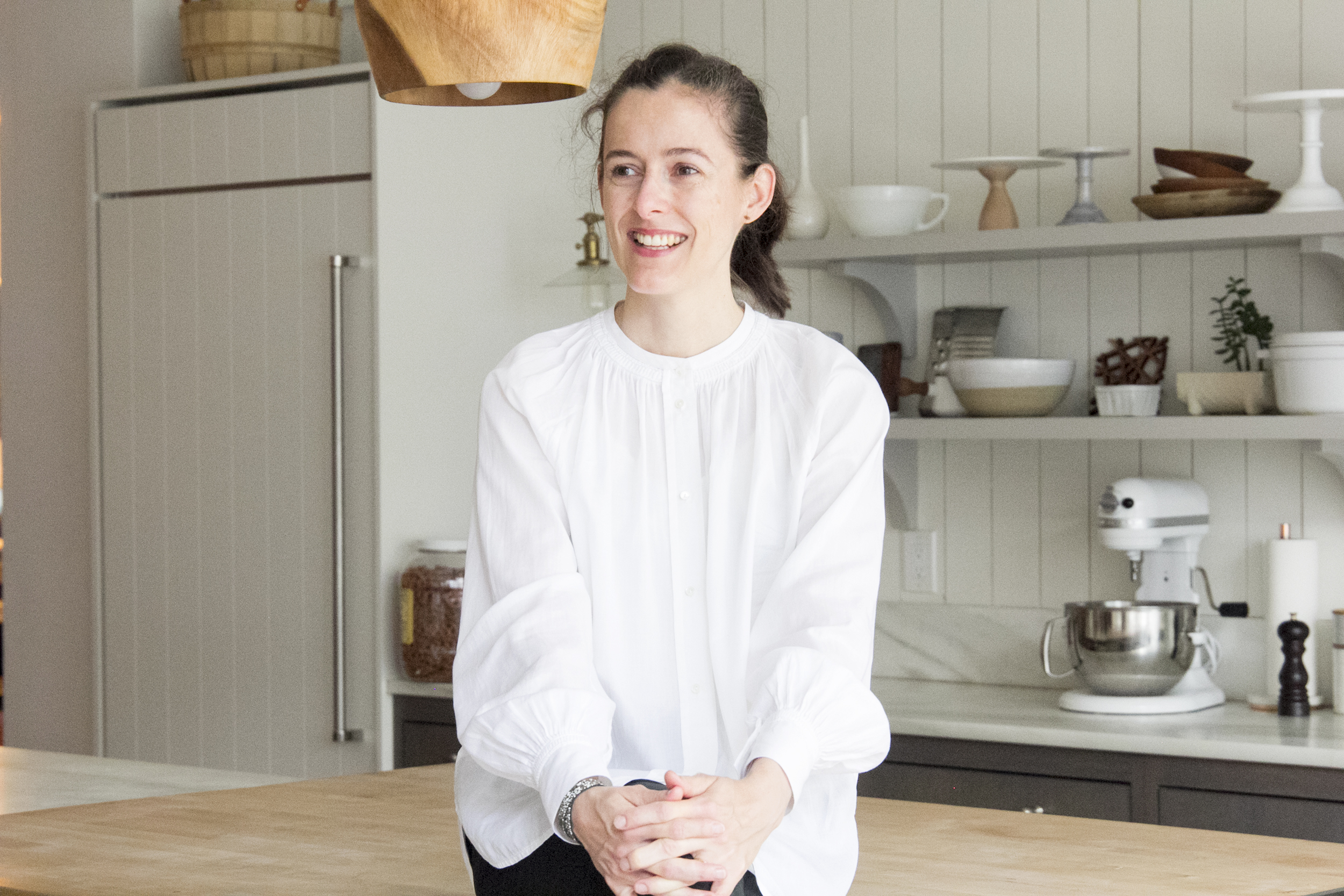It’s easy to get caught in the trap of corporate benefits, a steady salary, and a job role that allows you to become a little too comfortable. Some people love being static – it’s safe and dependable – but if you have a creative or entrepreneurial bone in your body, stasis can feel stagnant and constrictive. The best decisions I’ve ever made have been on the fly. You know that saying about life happening when you’re making plans? Times of great risk always lead to the greatest payoffs.
Food52 Amanda Hesser and Merrill Stubbs were introduced by a mutual friend, before joining forces to work on Amanda’s magnum opus—The Essential New York Times Cookbook. Amanda kept her “plum” job as a food editor and writer at the New York Times while the pair worked on the book. “When you’re a writer, you’re like a spectator in the stands,” Amanda explains. “That was the impetus for me to leave the Times.” Just like staying in a burnout, long-term relationship, it would have been easier to tread water and keep traction, but you don’t know what you don’t know. As humans, we’re wired to fear the unknown, programmed to take the path of least resistance, but if you can take that leap, that’s where you’ll find the most liberation.
Of course, making a move is always easier when you’re not alone. Amanda and Merrill’s relationship was a steady evolution from work colleagues to friends, and partners. “We were testing each other out,” says Merrill. “Luckily we both passed!” The trust between them is clear to see and evident in the success of Food52—and it underlines the fact that investing in relationships can lead to rich communities and unimagined achievements. The successful entrepreneurs talked us through bringing the website to life, evolving their business plans, and how they take care of themselves and their business relationship.
ON THEIR PROFESSIONAL BACKGROUNDS BEFORE STARTING FOOD 52
Merrill: During my senior year in college, my procrastination method of choice while writing my senior thesis was working my way methodically through the Joy of Cooking. I graduated with dreams of cooking school, but instead I took a “real job” as an assistant teacher in New York, where I’d grown up. It was a two-year commitment, but halfway through I was miserable and still thinking about cooking all the time. I turned in my resignation, called up Le Cordon Bleu in London, and less than three months later I was on a plane heading across the Atlantic. After a year at cooking school, I came back to the US and settled in Boston, where I interned at Cook’s Illustrated, worked behind the counter at the original location of Flour (Joanne Chang’s iconic bakery and cafe), taught kids to cook at an afterschool program, started my own catering business, and eventually launched an email newsletter all about food and cooking (no Squarespace in those days). Bitten by the food writing bug, I moved back to New York, where a friend introduced me to his colleague at the New York Times, knowing she was someone I had long admired: you guessed it – Amanda Hesser! We spent five years working together on her magnum opus, The Essential New York Times Cookbook, becoming great friends in the process. Amanda stayed at the Times full-time for a few years while we worked on the book, and I did freelance writing and editing for the Times and other publications. In the meantime, we were witnessing this huge groundswell among non-professionals who were passionate about food and cooking – and there really wasn’t anywhere online for those people to connect. So we started talking about a new, community-minded approach to food and cooking online, and what that might look like. The rest is history!
Amanda: For many years, I had a plum job as a food editor and writer at The New York Times. And while it was great, there was always part of me that wanted to be on the other side – to be a doer rather than an observer. When you’re a writer, you’re like a spectator in the stands. I wanted to be on the court playing. This was the impetus for me leaving the Times. Right after, I worked on a non-food start-up while Merrill and I were still working on the Times Cookbook. Soon enough, I realized this first startup didn’t have the bones to be a real business. I also recognized that Merrill and I were great partners and we had powerful insights that were worthy of a business. And so off we went.
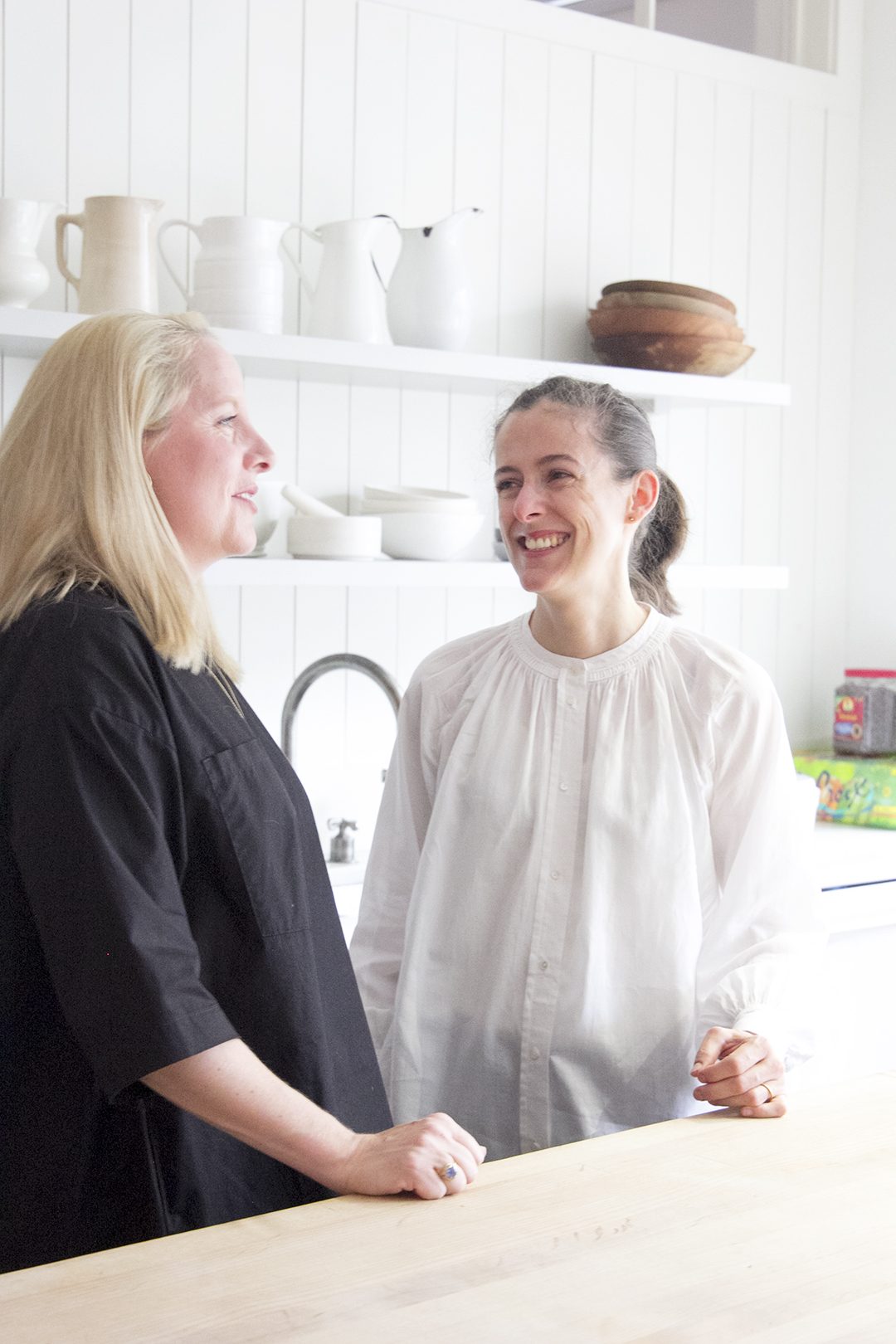 HOW WORKING ON THE COOKBOOK LAID A FOUNDATION THE FOOD 52
HOW WORKING ON THE COOKBOOK LAID A FOUNDATION THE FOOD 52
Amanda: It laid a foundation in two ways – the most important of which is that we gained a lot of experience working together before we went into business together. The second way it helped lay a foundation for Food52 was that in researching the Times’s recipe archive, which stretches back to the 1850s, we could see how essential its community of readers has been to the content the paper had produced. This really underlined the importance of community for us and this insight became part of the DNA of Food52.
THEIR POWERFUL CONNECTION & THE INGREDIENTS OF A GREAT PARTNERSHIP
Merrill: Before starting Food52, we worked closely together for a long time on The Essential New York Times Cookbook. We tested more than 1400 recipes in her kitchen over the course of about five years. When you spend that much time cooking with someone you get to know them pretty well – their strengths and weaknesses, their sense of humor, their quirks. A business partnership is truly like a marriage, and that was our courtship period. We were testing each other out as partners and friends – luckily we both passed!
Amanda: Dividing and conquering is the key to thriving. It’s inefficient and pointless to both be doing all the same things. If you can’t trust each other with different areas of the business, then you should question your partnership. We’ve divided our responsibilities in various ways as the business has scaled. Right now, Merrill oversees legal and accounting, and handles relationships with lenders; I head up investor and public relations. But there are two areas we never split up and that’s the creative vision of our brand and the overall business strategy. It’s essential that we work on these together so we’re both aligned on where the company is heading at all times.
THE ROLE COMMUNITY PLAYS IN THEIR BUSINESS
Amanda: This is something that many people expressed doubt that we could do – many naysayers assumed the community would become unwieldy. But this hasn’t happened at all. While our community has gotten much larger and more spread out – on site, on social, at events – we’re still able to actively engage with them and keep a dialogue going. We’d argue, the community has only gotten more dynamic and interesting as we’ve scaled. For instance, we’ve had our community vote on the color of a product, and we’ve tapped community members to write some of our books.
HOW THE FOOD 52 BUSINESS MODEL HAS EVOLVED
Merrill: In reality, there is no separation between cooking, entertaining and creating a home, and the tools and products you need to do these things. When you see a photo of a salad or a baked pasta or a steak, it’s going to be sitting in a bowl or a pan, and that naturally becomes part of the conversation about the preparation of that dish: “What size pan did you use?” “Is that enameled cast iron?” “Where did you get that gorgeous bowl?”
Yet the experience online for anyone who cared about cooking and keeping a beautiful home was very fragmented a few years ago; you had to go to one site for recipes, another for tips and techniques, and yet another to find great products. From the start, we wanted to bring all of this together – to create a platform for people to get everything they need all in one place, from a trusted source, and to be able to connect with others who are hungry (no pun intended) for the same inspiration and access.
Pretty much from the start, we talked about and linked off to our favorite tools, cookware, serve ware, etc. We felt this was an integral part of the support we were providing for people. When we launched our shop, our audience was already looking to us for product curation, so it wasn’t much of a leap.
We’re always thinking about how to communicate the why behind the things we sell. Because people can’t see the products in person before buying, it’s crucial that our photographs aren’t just beautiful but accurate as well; in the same vein, we have to make sure our product pages include basics like dimensions and sourcing information, while also telling compelling stories about how they’re made, by whom, and why we think they’re so special. There are a lot of moving pieces.
PIVOTING ON IDEAS OR DECISIONS
Merrill: One of our favorite interview questions for potential employees is, “What is a mistake you’ve made more than once?” We ask it because everyone has made at least one mistake twice (even three or four times) and as painful as it is, repeating a mistake can be one of the best opportunities for learning. And we know that when we’ve repeated mistakes, it’s often because we haven’t wanted to face a tough decision.
In the early days, we twice made hires that were too senior for the current stage of the business. And both times, while we knew pretty quickly in our guts that we needed to make a change, we waited longer than we should have to make the call. This didn’t do us or the people we eventually let go any favors, and it certainly didn’t benefit the business.
When something makes you uncomfortable, it’s likely there’s an important question or decision you may be avoiding. The good news is that the sooner you face it head-on, the sooner you’ll be able to put that discomfort in the rear view mirror; and odds are everyone will be better off.
THE PROCESS GETS MESSY – EMBRACE IT
Amanda: Humans crave process as a form of security – but security implies stasis, and if we’re not evolving and changing, then we’re not accomplishing our mission to help as many people as possible eat thoughtfully and live joyfully. Our goal is to reach and affect more and more people, and we have to do this in an ever-changing environment, so we, too, need to fully embrace change. We feel that when people are less tied to process and “safety,” they’re liberated to create – because there is less to hold them back.
THE REASON YOU CAN SEE INTO ALL THE CONFERENCE ROOMS IN THEIR OFFICE
Merrill: When we started the company, we wanted to create our own specific culture. We knew what we wanted to bring with us from the larger companies we’d worked for in the past, and what we wanted to do differently. We believe in being as open and honest as possible with our team – something we also strive for in our interactions with our community of readers and customers. The idea of a walled garden, with experts or executives dictating from on high, is really unappealing to us; we came up with our list of core values as a team, we share our financials and board decks at our company meetings, and we talk publicly about our attempts to increase diversity within our ranks and the content we cover.
REFLECTING ON THOSE EARLY INVESTOR MEETINGS
Merrill: In some ways, it’s painful to look back on those days, because we were so green. But there has always been a purity about what we’re trying to achieve, which has resonated with some investors and not others. At the beginning, with just a proof of concept and very little data, we were trading on our passion, our conviction, and our ability to connect with people on a human level. This was actually a pretty effective filter for potential investors we wanted to partner with; it meant that those early people who invested in the company were really investing in us. This is true to some degree with all first-time entrepreneurs, but it was particularly true for us because at the time the idea of food as a lifestyle hadn’t quite gained mainstream traction, and content was definitely out of favor.
Amanda: We’re friendly, decently-mannered, middle aged women with families who come from traditional media. On the surface, nothing about us matched the (cartoonish but pervasive) image of a white male 20-something, sneaker-wearing, brash entrepreneur.
ON THE SACRIFICES THAT COME WITH ENTREPRENEURSHIP
Merrill: Most entrepreneurs make a lot of the same sacrifices: time for yourself, sleep, health, time with family and friends — sometimes sanity. Because we bootstrapped the company through launch and then took on pretty modest amounts of funding as we grew the business, we didn’t pay ourselves for the first two years; after that we started taking salaries, but small ones, and now, seven years in we still don’t take home nearly as much as we would if we’d pursued corporate careers. Of course we each have a stake in a business that has the potential to be worth a lot of money, but those have been diluted by investments. And the risk factor is real when you’re dependent on an outcome to make up for a deficit that has accumulated over many years. We love what we do every day, but we both have families, and New York is an expensive place to live.
ON KEEPING THINGS FRESH AND EXCITING AS THE BUSINESS MATURES
Amanda: Pushing ourselves to constantly look forward and not wait for what’s next to happen — we try to make it happen ourselves. Getting to create your own business is a huge privilege and opportunity, and we try to remember this as much as possible, especially during the sloggy periods.

